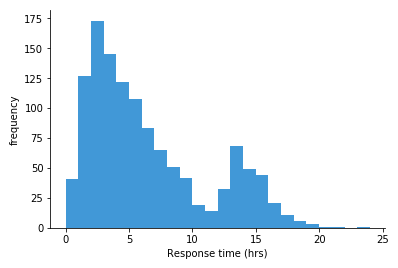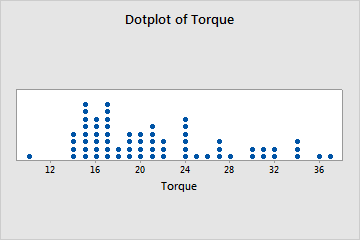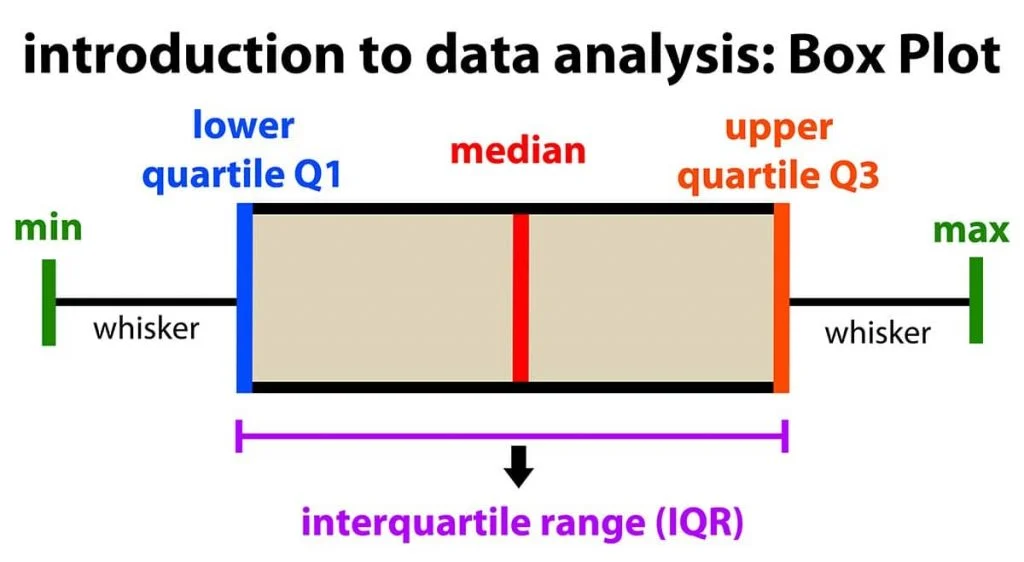Statistics Final Flashcards (ST 311 NCSU)
1/196
Name | Mastery | Learn | Test | Matching | Spaced |
|---|
No study sessions yet.
197 Terms
Statistics
the science of planning studies and experiments, obtaining data, and organizing, summarizing, analyzing, and interpreting those data and then drawing conclusions based on them
Conducting a statistical study includes 3 phases:
Prepare: consider the population, data types, and sampling method
Analyze: describe the data you collected and use appropriate statistical methods to help with drawing conclusions
Conclude: using statistical inference, make reasonable judgements and answer broad questions
Data
collections of observations, such as measurements, counts, descriptions, or survey responses
Population
the complete collection of all measurements or data that are being considered. Typically, a population is the complete collection of all data we would like to better understand or describe. We also call it the population of interest
Sample
a subset of members selected from a population (random)
Parameter
a numerical measurement describing some characteristic of a population
Statistic
a numerical measurement describing some characteristic of a sample
Quantitative (numerical) data
consists of numbers representing counts or measurements (2 types: discrete or continuous)
Categorical data (qualitative)
consists of names or labels (NOT numbers)
Discrete data (quantitative)
result when the data values are quantitative and the number of values is finite or countable (ex: # of tosses of a coin before getting tails)
Continuous data (numerical)
result from infinitely many possible quantitative values where the collection of values is not countable (ex: the arm spans in inches of high school seniors)
Our goal is to answer a question about a ___
population
We want our sample to be random and ___ of the population
representative
Simple Random Sample (SRS)
A sample of n subjects is selected in such a way that every possible sample of the size size n has the same chance (probability) of being chosen
Stratified Sample
Subdivide the population into 2+ subgroups (or strata) so that the subjects in the same subgroups share the same characteristics. Then draw a sample from each subgroup. The number sampled from each stratum may be done proportionally with respect to population size.
Cluster Sample
Divide the population area into naturally occurring sections (or clusters), then randomly select some of these clusters and choose all the members for those selected clusters)
Systematic Sample
select some starting point and then select every kth element in the population. Works well when units are in the same order like an assembly line
Multistage sample
Collect data by using some combination of the basic sampling methods
Convenience Sampling
Select the first k # of subjects that you come across
Bad Sampling Frame
When attempting to list all members of a population, some subjects are missing. It can be difficult to make a complete list
Non-response bias
Some part of the population chooses not to respond, or subjects were selected but are not able to be contacted
Response bias
Responses to questions are not truthful. This may occur when people are unwilling to reveal personal matters, admit to illegal activity, or tailor their responses to “please” the investigator
Wording and Order Bias
The way questions are worded may be leading/inflammatory to elicit a response. Or the order of questions influences answers.
Measure of center
a value at or near the center or middle of a data set, “typical” values for a group
EX: mean, median, mode
Σ
denotes a sum, “sigma”
x
denotes individual data value
n
denotes # of values in a sample, “sample size”
N
denotes number of values in a population
x̄
denotes the same mean, “x bar”
μ
denotes the population mean, “mew”
Mean
found by adding all values and dividing by the number of values in the set. A sample mean is the mean of a sample. A population mean is the mean of an entire population.
Median
the value that is in the middle when listed in ascending order. Shows what # separates the bottom 50% of the data from the top 50%. Roughly half of all values are below, and half are above it.
Mode
the value that occurs with the greatest frequency. Could be no mode. One mode: unimodal, two modes: bimodal, 2+ modes: multimodal
Histogram
the graph of a frequency distribution, a graph of bars of equal width drawn adjacent to each other, a horizontal scale representing classes of quantitative data values, a vertical scale (height) represents frequency

Dotplot
shows each value in a dataset as a dot above a number line

Measures of variation (or spread)
Range, IQR, variance, standard deviation
Range
max data value - min data value (highly affected by outliers)
Interquartile Range (IQR)
uses quartiles to provide a range of values that are not as affected by potential outliers as the range
(Q1, Q2, Q3)…1/4 of the data lies between 2 consecutive quartiles
IQR= Q3-Q1
3 IQR quartiles together with the min and max values constitutes the 5-number summary:
minimum
Q1 (median of the first half of the dataset)
Median
Q3 (median of the second half of the dataset)
Maximum

Variance
(Standard deviation)²
Standard deviation
sqrt(variance)
Defined as a measure of how much data values deviate from the mean, the value of it is never negative, zero ONLY when data is all the same, larger values indicate greater amounts of variation, SD can increase a lot with one or more outliers, units of SD are the same as the units of the OG data values
a²
Population variance
σ or s
standard deviation
s²
sample variance
Experiment
the process of applying some treatment and then observing the effect
almost always compares 2+ groups: treatment and control group
the individuals in an experiment are called units
Control group
no treatment
Units
the individuals in an experiment
Observational study
the process of observing and measuring specific characteristics without attempting to modify the individuals studied
tell “what’s happening” and can’t describe cause-effect relationships
accessing reliable records counts as observational
Response variable
measures outcome of a study
explanatory variable
explains/influences changes in the response variable
Design of experiment
plan for collecting the sample
Treatment
a specific experimental condition applied to the units/subjects
Variability in Experiments
There will be variability from treatment effects, experimental error, lurking variables, and confounding variables
Treatment effects
different treatments cause different outcomes
Experimental error
variability among observed values of the response variable for units receiving some treatment, small as possible
Lurking variables
a variable not among the explanatory variables in a study but has impact
Confounding variables
2 variables confounded when the effects on the response variable can’t be distinguished
Principles of Experiment Design
Control, randomization, and replication
Control
Control the effects of lurking/confounding variables by carefully planning
Randomization
randomly assign experimental units to treatments to decrease bias
Replication
measure the effect of each treatment on many units to increase chance variation
Completely Randomized Design
participants randomly assigned to treatments, so lurking variables affect each group equally
Randomized Block Design
the experimenter divides participants into subgroups called blocks, so variability in blocks is less than between blocks. Then, part of each block are randomly assigned to treatment groups.
Matched Pairs Design
a special case of randomized block design; used when only 2 treatment groups are present. Participants grouped in pairs on one or more blocking variables. Then, in each pair, participants randomly assigned to different treatments
Placebo
false drug that subjects believe is real
Placebo effect
tendency to react to a drug/treatment regardless of function
Bias of Subjects
subjects may want to please researcher/hope for specific outcome (Hawthorne Effect, when people behave differently b/c they know they are being watched)
Bias of Researchers
people behave in ways that favor what they believe; researchers may assign subjects to groups/report results in a bias way
Blinding
when individuals in experiments are not aware of how subjects are assigned, so they are less likely to respond with bias
Single-blind study
those who could influence the results are blinded
Double-blind study
those who evaluate the results are blinded too
z-score
the number of standard deviations away from the mean a certain data value is
positive z-score
data value is above average
negative z-score
data value is below average
Standardizing
the process of converting a data value (often labeled x) to a z-score
𝑧 = (𝑥−𝜇) / 𝜎
converting x-value to z-score
Empirical Rule
When a distribution is bell-shaped/normal, the mean and standard deviation have the following relationship:
99.9% of the data is within 3 standard deviations of the mean, 95% of the data is within 2 SD’s, and 68% of the data is within 1 SD of the mean (34% is within -1 SD, 34% is within +1SD).
The 34, 14, 2.5 rule
Significantly low value
values are generally considered significant or unusual if they are (u-2a) or lower
Significantly high value
values are generally considered significant or unusual if they are |u + 2a | or higher
Values not significant
between (u-2a) and (u + 2a)
We will use a significance % of ___ as a general guide for significant values
5%
Density curve
If we scale the bell curve model so the area under the curve = 1
Probability, in a contin. prob. distri., is consequently the ____ the density curve.
area under
Probability Statement
P (small # </= x </= bigger #)
The graph of a normal distri. is called the
normal curve
In a normal curve…
The mean, median, and mode are EQUAL
The normal curve is bell-shaped and is symmetric on the mean..
The total area under the normal curve is EQUAL TO 1.
The normal curve approaches, but never touches, the x-axis as it extends further away from the mean.
Distribution of z-scores
Standard normal distribution
Notation
X ~ N(u, σ) where the ~ symbol reads “is distributed
The random variable X is distri. normally with mean u and SD σ and
Z ~ N(0,1)
Distribution
describes the possible values of a variable, how often they occur, and what pattern they create
Probability description
does the same thing as other distributions but describes how likely (instead of how often) the values of the variable are to occur)
Continuous Random Variable
has an uncountable number of possible outcomes, represented by an interval on the number line
Discrete Random Variable
has a finite or countable number of possible outcomes that can be listed. Countable refers to the fact that they might be infinitely many values, but they can be associated with a counting process.
Criteria for Binomial Distribution
There are a fixed number of trials/observation. Labled n.
The trials are independent (the outcome of any individual trial doesn’t affect the probabilities in the other trials)
Each outcome can be classified as a success or failure. The outcome that a random variable is counting is labeled the success.
The probability of a success is constant for each trial. The probability of success is denoted by P(S) = p.
Binomial Notation
X ~ Bin (n,p)
parameters of the distribution
number of trials (n), probability of success (p)
Expected Value
E(x), mean of a random variable
The expected value of a random variable is a ___
weighted mean of the outcomes
The expected value of a discrete random variable is equal to the ____ of the random variable
mean
Binomial Variance
σ² = n x p x q where q = 1-p